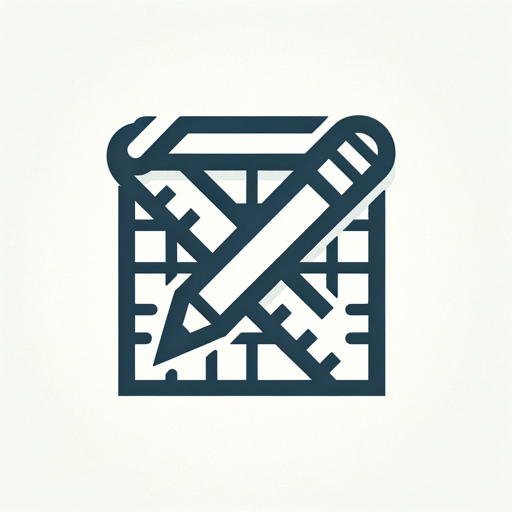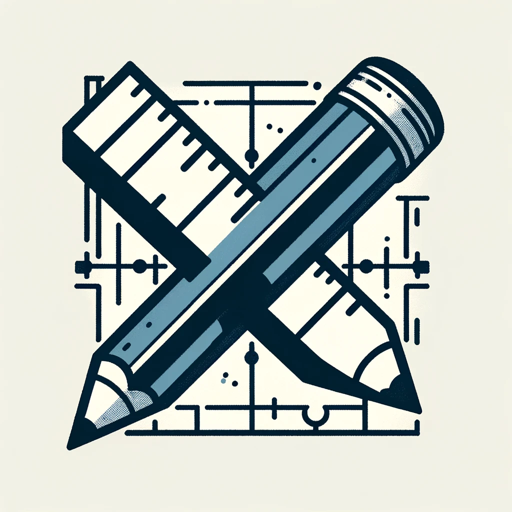ArchiMate Architect-AI-powered ArchiMate modeling.
AI-powered ArchiMate modeling made simple.
Generates ArchiMate models from text
Create a business layer model from this description.
Show how this system spans application and technology layers.
Interpret this interview for relevant ArchiMate layers.
Suggest technology layer changes based on this scenario.
Related Tools

AWS Cloud Architect & developer
Expert in AWS Cloud

Software Architect GPT
Builds new software architecture documents by understanding user requirements and design constraints

Architecture AI
AI architect for designing beautiful buildings

Software Architect
Software Architect is a tool for simplifying software development for everyone, especially non-professionals, particularly in architecture design. It supports forms like C, Java, scripting, low-code, cloud-native, and more, offering language and framework

UML Diagram Expert
Expert in software diagram creation using UML. Plantuml, Mermaid, D2

IT Architecture Diagram Generator
To create IT Architecture diagram for the requirement given
20.0 / 5 (200 votes)
Introduction to ArchiMate Architect
ArchiMate Architect is a specialized tool designed to assist enterprise architects in modeling, analyzing, and visualizing the architecture of organizations using the ArchiMate modeling language. The primary purpose of ArchiMate Architect is to provide a structured and standardized way to describe complex enterprise systems, including their components, relationships, and dependencies across various layers such as Business, Application, and Technology. By using ArchiMate Architect, organizations can align IT and business strategies, streamline processes, and make informed decisions regarding system design and transformation. For instance, when a company is undergoing a digital transformation, ArchiMate Architect can be used to map out current IT assets, identify gaps, and plan future states that align with business goals.

Key Functions of ArchiMate Architect
Modeling Enterprise Architecture
Example
An organization needs to document its entire IT landscape, including business processes, applications, and technology infrastructure.
Scenario
Using ArchiMate Architect, the enterprise architect creates a comprehensive model that visually represents the business processes supported by specific applications, the technology stack used by these applications, and how everything aligns with the organization's strategic goals. This model can then be used to identify redundancies, optimize resources, and plan for future expansions.
Impact Analysis
Example
A company is considering replacing an outdated CRM system with a new solution.
Scenario
ArchiMate Architect helps in conducting an impact analysis by mapping out all dependencies related to the current CRM system, such as linked business processes, applications, and data flows. The tool then enables the architect to simulate the replacement scenario, helping stakeholders understand the potential impacts on various layers of the enterprise architecture and make data-driven decisions.
Alignment of IT and Business
Example
A business wants to ensure that its IT infrastructure supports its strategic objectives effectively.
Scenario
Using ArchiMate Architect, the architect models the business strategy and maps it against the current IT architecture. This helps in identifying areas where IT investments may not be fully aligned with business goals. For example, if the business strategy emphasizes customer experience, the tool can help in visualizing how current IT services support or hinder this objective, leading to more informed decisions on IT adjustments.
Target Users of ArchiMate Architect
Enterprise Architects
Enterprise architects are the primary users of ArchiMate Architect. They benefit from the tool's ability to create detailed models of enterprise architecture, which are crucial for designing and managing complex IT systems. These professionals use the tool to ensure that IT and business strategies are aligned, conduct impact analysis, and support decision-making processes. The tool provides a systematic approach to understanding and communicating the intricacies of enterprise systems.
IT Managers and CIOs
IT Managers and Chief Information Officers (CIOs) also find ArchiMate Architect valuable. They use it to oversee the IT landscape, ensuring that it aligns with business needs and supports the overall strategy. For IT managers, the tool aids in project planning, resource allocation, and risk management by providing clear insights into how different components of the IT infrastructure interact and impact each other. CIOs leverage the tool to communicate effectively with other executives about IT strategy and its alignment with business goals.

Guidelines for Using ArchiMate Architect
Step 1
Visit aichatonline.org for a free trial without login, also no need for ChatGPT Plus.
Step 2
Familiarize yourself with the ArchiMate framework, including its layers and concepts, to better understand how to structure your models effectively. This is essential for using the tool efficiently.
Step 3
Input your textual descriptions or interview-derived information into the tool, and use its AI-powered capabilities to generate structured ArchiMate models. Ensure clarity in your descriptions to get the best results.
Step 4
Review the generated models, making adjustments or refinements as needed to better align with your organization's architecture or specific project needs.
Step 5
Export your models for use in presentations, documentation, or further analysis. Utilize the tool's export options to integrate your work into broader project workflows.
Try other advanced and practical GPTs
Professor de Fisica e Matematica
AI-powered tool for personalized physics and math education

Supply Chain manager
AI-Powered Optimization for Your Supply Chain

Tennis Predict
AI-powered insights for smarter tennis predictions

Physic Homework Helper
AI-powered physics problem solver.

Homework Helper
AI-powered support for your toughest academic challenges

神ブログ作成ツール
AI-Powered Content Creation Made Simple

DBT Architect
AI-Powered Guidance for dbt Success

TOK Exhibition and Essay Mentor
AI-Enhanced Guidance for TOK Excellence

写参考文献综述
AI-powered tool for literature reviews

Travel Planner Plus
AI-powered travel planning at your fingertips.

Football Match Analyst with Independent Analysis
AI-driven insights for football analysis.

Face Swapper
AI-powered face swap in seconds

- Education
- Process Mapping
- Enterprise Architecture
- Business Modeling
- IT Planning
Frequently Asked Questions about ArchiMate Architect
What types of ArchiMate layers does ArchiMate Architect support?
ArchiMate Architect supports all key ArchiMate layers, including the Business, Application, and Technology layers. It helps in creating models that map out the different aspects of an enterprise architecture clearly and coherently.
How accurate are the models generated by ArchiMate Architect?
The accuracy of the models depends on the clarity and detail of the input provided. ArchiMate Architect uses advanced AI to interpret and structure information, but the final model should be reviewed and refined by a domain expert to ensure it meets specific requirements.
Can I use ArchiMate Architect for educational purposes?
Yes, ArchiMate Architect is an excellent tool for learning and teaching enterprise architecture concepts. It allows students and educators to visualize complex architectures and understand the relationships between different architectural elements.
What are some common use cases for ArchiMate Architect?
Common use cases include enterprise architecture documentation, project management support, IT landscape planning, business process modeling, and educational purposes. It is particularly useful for generating clear, structured models that can be used in presentations or as part of project documentation.
Does ArchiMate Architect support collaboration between team members?
Currently, ArchiMate Architect is designed for individual use, but models created with the tool can easily be shared with team members for collaboration. Export options allow for easy integration with other tools and platforms where team collaboration can take place.